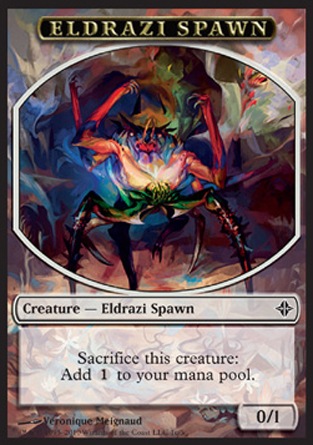A study published in this month’s issue of The Journal Dominarian Alchemy finds that 97.6% of eldrazi spawn do not survive infancy. Here to explain this shocking statistic is lead researcher Figdab Bibblebob.
The greatest obstacle to a new eldrazi’s survival is his species’ peculiar choice of spawning grounds. While the fossil record indicates that in ages past they were allowed some time to develop their skills in play, they are now birthed directly onto a battlefield.
This practice has proved sustainable for groups with hardier young, such as the kraken genus. Eldrazi young however have almost no combat capabilities and no way to evade or shroud themselves from more dangerous creatures.

Most of the deaths we recorded weren’t even from intentional attacks on the spawn though. They have a dreadful lack of situational awareness, and were often seen wandering in front of all manner of beasts, knights, and demons that were charging at someone else entirely. It was such a common occurrence that my team started joking that the safest place to be in a fight was directly behind the nearest eldrazi cub.
We didn’t just learn that they were helpless and oblivious though. They are also incredibly nutritious and tasty, based on the numbers we saw devoured. Their blood is also considered a delicacy in vampire high society, and some of this group was poached to satisfy that lucrative market.
Perhaps the most ironic factor though is that several primitive cultures surrounding their native habitat have taken to sacrificing them in intricate rituals designed to summon the adult eldrazi to their side to hopefully do their bidding. When the unfortunate spawn in question’s progenitors show up to kill everyone involved, it just reinforces that the ritual works.
Despite all this, I still hold out some hope for this majestic and horrible race. Some activist artificers have laid out plans to provide the spawn with armor, gliders, and most importantly maps to help them survive long enough to get somewhere less lethal to stay until they’ve grown self-sufficient. Also, while this particular survey is dire, there may be some comfort in its 2.5% margin of error.